Indonesia’s Fire Outbreaks Producing More Daily Emissions than Entire U.S. Economy
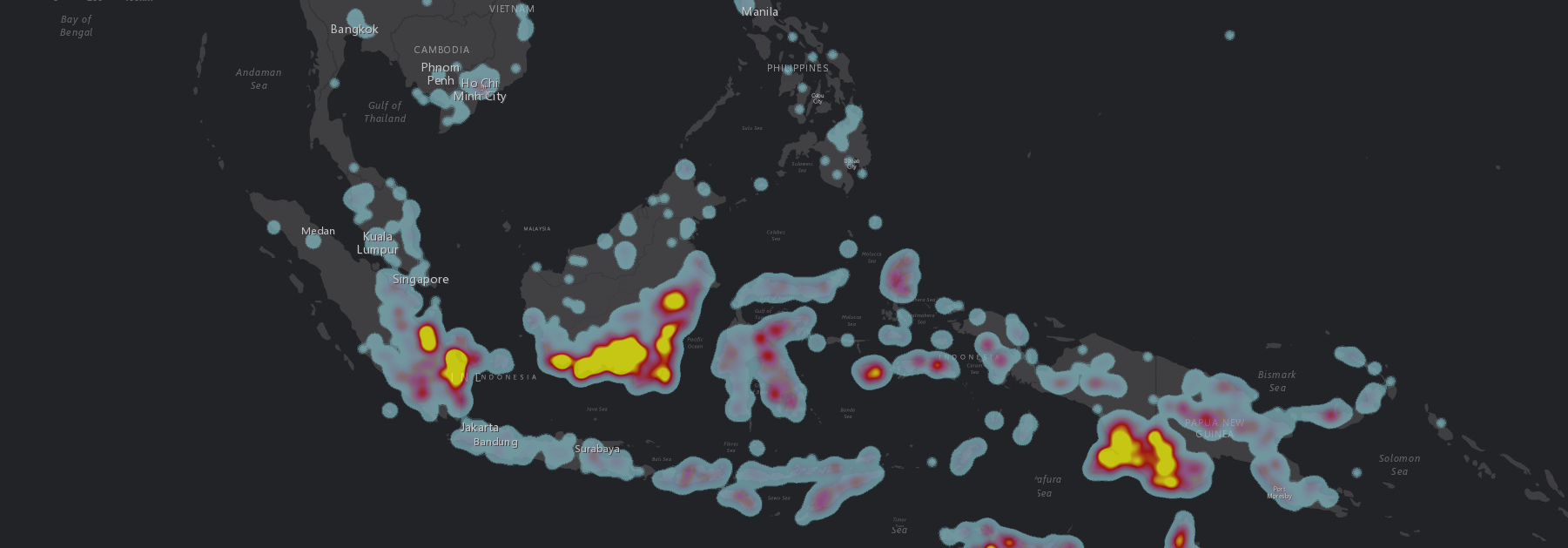
By Nancy Harris, Susan Minnemeyer, Fred Stolle and Octavia Payne According to estimates released this week by Guido van der Werf on the Global Fire Emissions Database, there have been nearly 100,000 active fire detections in Indonesia so far in 2015, which since September have generated emissions each day exceeding the average daily emissions from all U.S. economic activity. Following several recent intense outbreaks of fires—in June 2013, March 2014 and November 2014—the country is now on track to experience more fires this year than it did during the 2006 fire season, one of its worst on record.
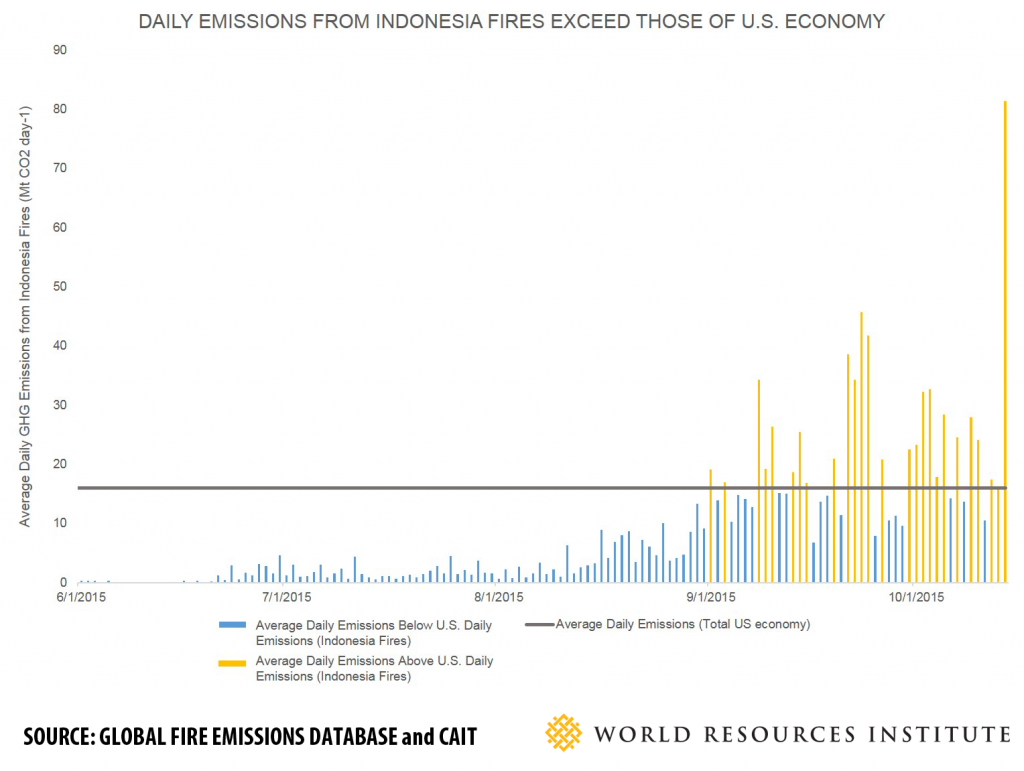 On 26 of the past 44 days (indicated in gold), daily estimated GHG emissions from fires in Indonesia surpassed average daily emissions from the entire US economy (approximately 15.95 Mt CO2 per day). A massive spike in emissions can be seen on October 14, when 4,719 fires were observed.
On 26 of the past 44 days (indicated in gold), daily estimated GHG emissions from fires in Indonesia surpassed average daily emissions from the entire US economy (approximately 15.95 Mt CO2 per day). A massive spike in emissions can be seen on October 14, when 4,719 fires were observed.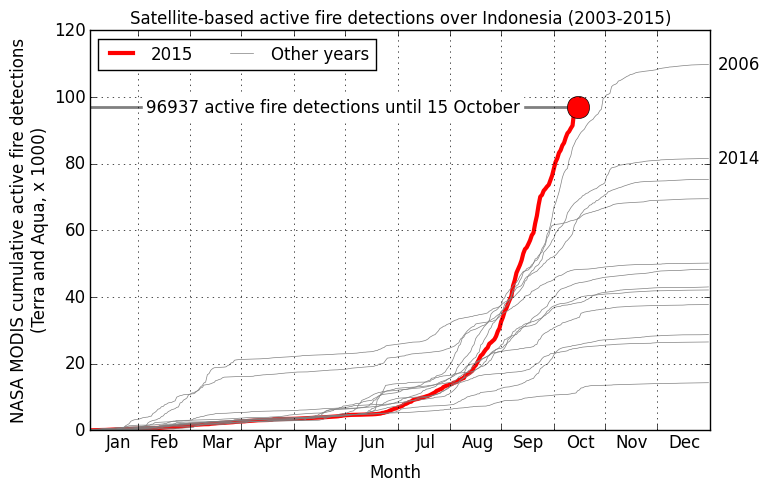 Fire emission estimates based on the Global Fire Emissions Database updated for 2015 using NASA MODIS active fire data. Figure courtesy Guido van der Werf.
Fire emission estimates based on the Global Fire Emissions Database updated for 2015 using NASA MODIS active fire data. Figure courtesy Guido van der Werf.Emissions Spikes Caused by Burning Peatlands
Global Forest Watch Fires shows that more than half of these fires have occurred on peatland areas, concentrated mainly in South Sumatra, South and Central Kalimantan and Papua. These regions continue to suffer major fires as the fire alerts density map below shows, with few signs that occurrences are diminishing.
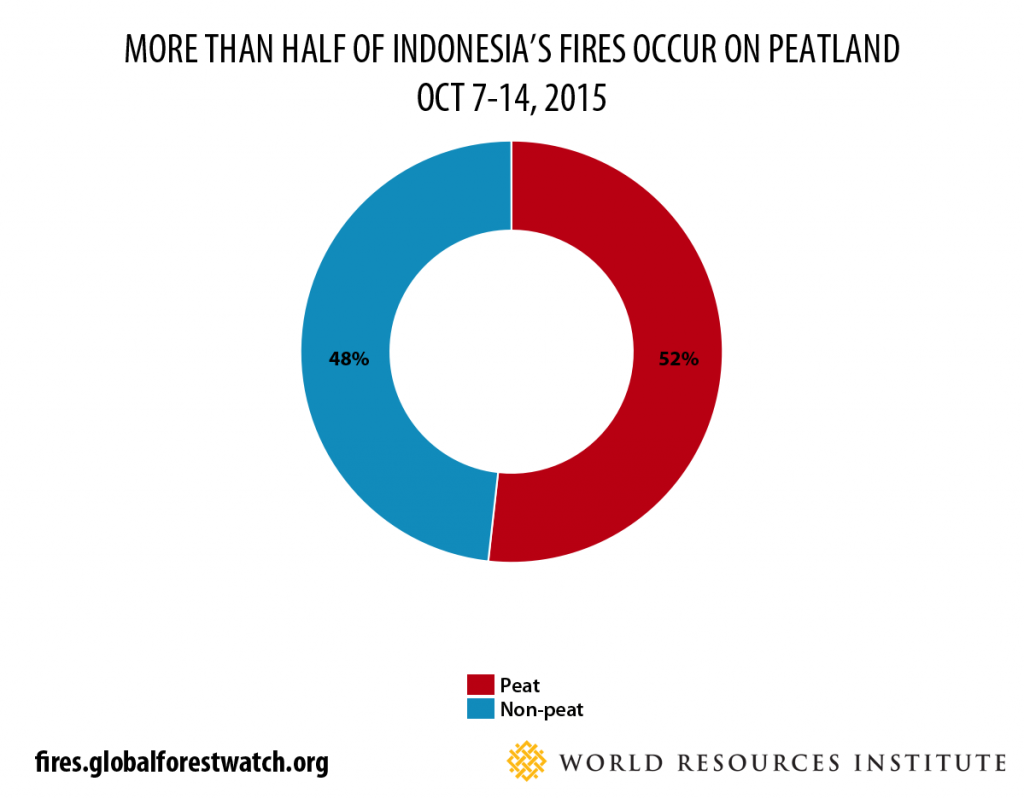
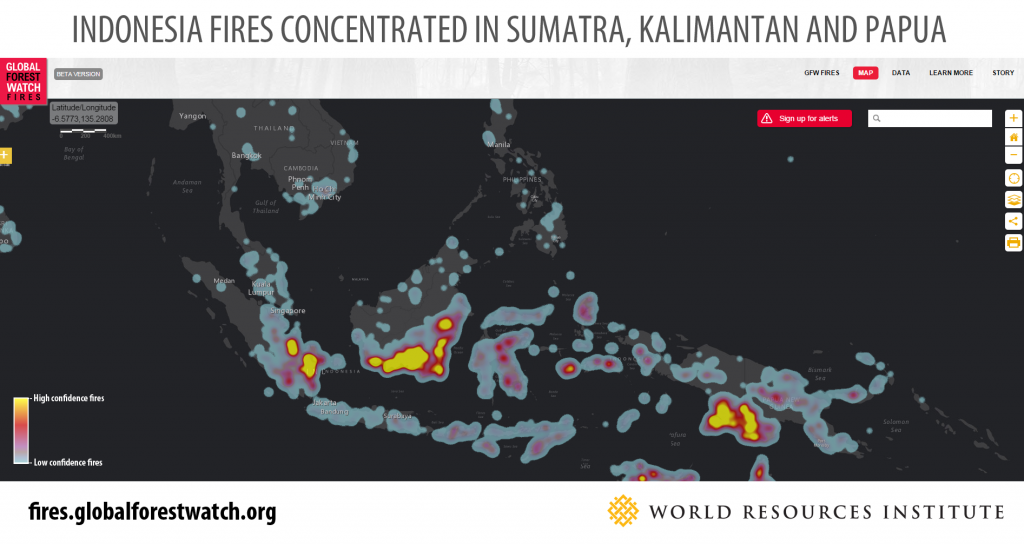 Global Forest Watch Fires heatmap shows areas with highest concentrations of fires.
Global Forest Watch Fires heatmap shows areas with highest concentrations of fires.The burning of tropical peatlands is so significant for greenhouse gas emissions because these areas store some of the highest quantities of carbon on Earth, accumulated over thousands of years. Draining and burning these lands for agricultural expansion (such as conversion to oil palm or pulpwood plantations) leads to huge spikes in greenhouse gas emissions. Fires also emit methane, a greenhouse gas 21 times more potent than carbon dioxide (CO2), but peat fires may emit up to 10 times more methane than fires occurring on other types of land. Taken together, the impact of peat fires on global warming may be more than 200 times greater than fires on other lands.
Putting the Data in Perspective
What does a climate catastrophe look like in a real world context? Since September, daily emissions from Indonesia’s fires exceeded daily emissions from the entire U.S. economy on 26 days. To put it into perspective, the U.S. economy is 20 times larger than Indonesia’s. Van der Werf pointed out in a recent report that emissions from these fires over a 3 week period are also already higher than the total annual CO2 emissions of Germany.
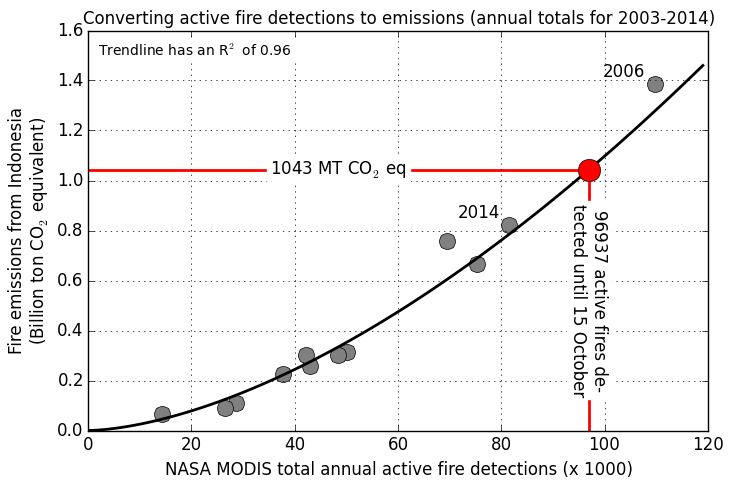 Figure courtesy Guido van der Werf.
Figure courtesy Guido van der Werf.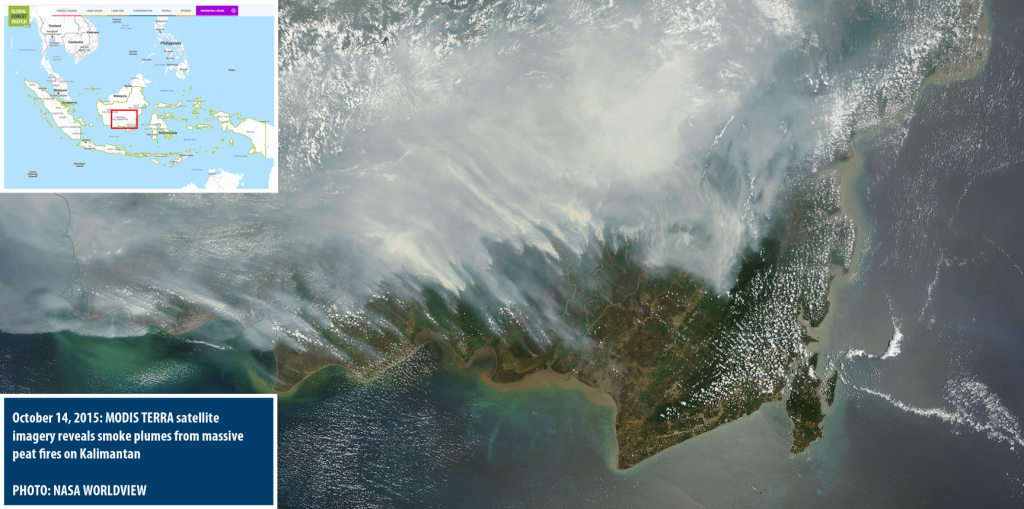 On October 14, which had the highest number of fires to date this year with 4,719, MODIS Terra imagery reveals smoke plumes from massive peat fires on Kalimantan.
On October 14, which had the highest number of fires to date this year with 4,719, MODIS Terra imagery reveals smoke plumes from massive peat fires on Kalimantan.For Indonesia, the Climate Challenge Is a Land Management Challenge
Reducing emissions from fires is a significant challenge. Last month, Indonesia released a draft of its new climate plan, or Intended Nationally Determined Contribution (INDC), ahead of the climate negotiations taking place at the Paris COP in December. The draft INDC calls for at least a 29 percent emissions reduction below business as usual by 2030— and up to 41 percent in reduction with international assistance and cooperation. While the new data show how fires present a major challenge to reaching this goal, Indonesia can still make progress if the government focuses on better land planning, improved law enforcement, and alternatives for small farmers to burning land. If Indonesia is to meet its climate commitment, making significant investments in these areas to prevent future fires must be the first step.
Explore More Articles
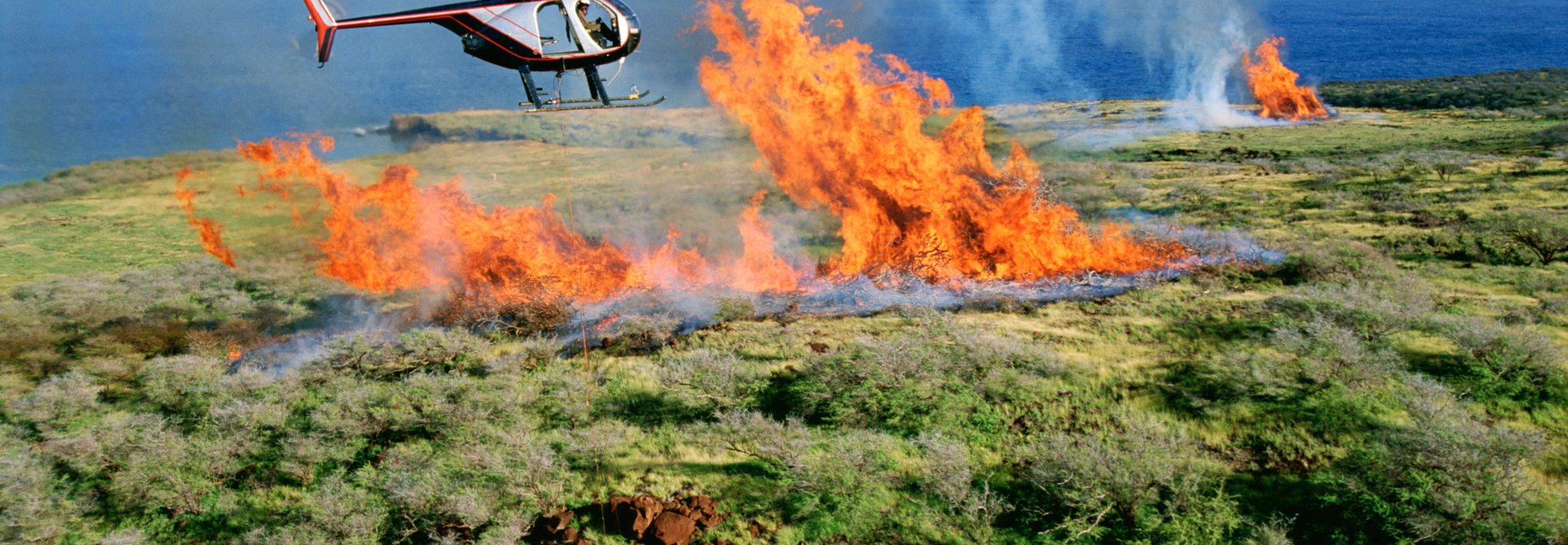
As Extreme Wildfires Threaten Forests, Indigenous Leadership Offers Solutions
Indigenous Peoples and local communities are among the world’s most effective forest stewards. Yet a new report from WRI and WWF-Australia finds that these lands are disproportionately affected by increasing wildfires.

